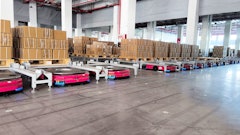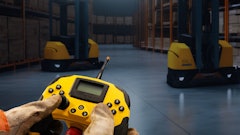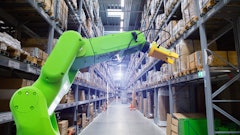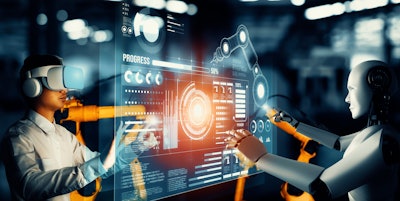
When people talk about the “workforce of the future,” especially in fulfilment, the conversation inevitably veers toward the question of humans or machines. It’s framed as a replacement story, with endless headlines about robots taking jobs, but this misses the bigger picture. In fact, the reality is more nuanced and far more optimistic because the future isn’t about replacement, it’s about collaboration.
What collaboration looks like in practice
The most exciting developments in fulfilment today aren’t about full replacement but about integration, where highly automated picking systems still rely on people to handle exceptions and customer-specific requests. Deployment of collaborative robots shows the same principle: cobots now move shelves and goods across warehouses, but human associates remain essential for quality checks, problem-solving, and customer-focused tasks.
In each of these cases, technology enables people to do their jobs better rather than replace them. Automated systems can flag an anomaly in a picking process, but it takes human judgment to diagnose whether it’s a misplaced item, a supplier error, or a customer-specific requirement. That insight doesn’t just resolve the issue, it feeds intelligence back into the system, making it smarter and more effective the next time.
Dividing tasks between people and machines
The industry is moving toward a model where technology and people work seamlessly together. Machines are brilliant at repetitive, physically taxing, and rule-based tasks - scanning, picking, sorting, and transporting - while humans excel at judgment, creativity, adaptability, and empathy. The real power comes when these two capabilities are combined.
Take cobots, for example. Collaborative robots now support warehouse staff with heavy lifting or high-volume picking, reducing strain and injury while boosting throughput. Wearable technology guides workers through complex environments, increasing accuracy and speed while freeing employees from memorizing processes. AI-powered dashboards optimize shift patterns or route planning, giving supervisors richer insights without replacing the need for human decision-making.
In all of these examples, the human remains at the center, making sense of exceptions, solving problems, and ensuring customers get a quality experience. A picking system can flag a discrepancy, but it’s a human who determines if it’s a supplier error, a misplaced item, or a customer-specific requirement. That judgment not only resolves the issue but feeds back into the system to make it smarter over time.
That’s why reframing automation as “human plus machine” is critical to building resilient fulfilment operations. Instead of asking “what jobs will be replaced?” ask “how do we create safer, smarter, and more rewarding roles?” That shift in mindset is the hardest barrier to overcome, not the technology itself.
Skills for a tech-enabled workforce
Of course, building this future requires investment in people as much as in systems. Employees need confidence with digital tools, from handheld scanners to AI-driven dashboards. They also need to hone skills that are uniquely human: critical thinking, adaptability, collaboration, and communication. The best training approaches are hands-on, ongoing, and demystify technology. Peer mentoring, gamified modules, and creating safe spaces to ask questions all help workers feel empowered rather than intimidated.
Building a culture of partnership
Equally important is culture. Leaders must be transparent about why new technology is being introduced and clear about the benefits to employees, not just to the bottom line. Celebrating wins, such as reduced injury rates or faster onboarding with wearable guidance, reinforces that technology is an enabler, not a threat. Involving employees in pilot programs is another powerful way to build ownership and trust.
And the business benefits are compelling. Beyond efficiency, which is the most obvious gain, collaboration between humans and machines improves safety, reduces turnover, enhances engagement, and strengthens customer satisfaction. A workforce that feels valued and supported is more motivated and committed, qualities that no machine can replicate.
The future
The workforce of the future won’t be defined by headcount reductions but by role transformation. We’ll see machines take on nearly all the repetitive manual labor, while humans move into supervisory, analytical, and customer-facing positions.
The story of Industry 4.0 in fulfilment isn’t about machines replacing people - it’s about building operations that are safer, smarter, and ultimately more human. The businesses that recognize this will be the ones best positioned to thrive.


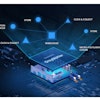
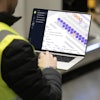

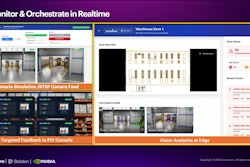
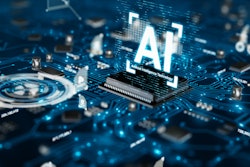


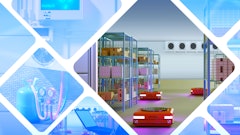
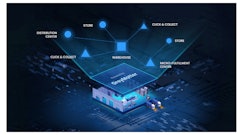

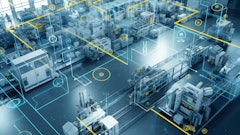
![Pros To Know 2026 [color]](https://img.sdcexec.com/mindful/acbm/workspaces/default/uploads/2025/08/prostoknow-2026-color.mduFvhpgMk.png?ar=16%3A9&auto=format%2Ccompress&bg=fff&fill-color=fff&fit=fill&h=135&q=70&w=240)
